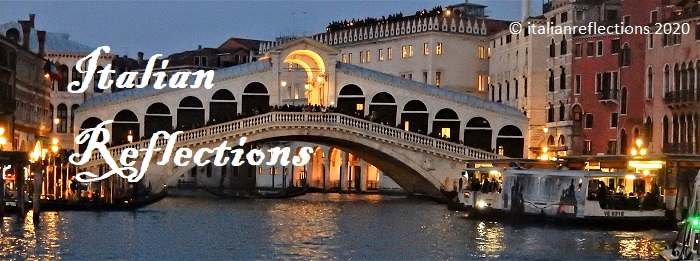COVER PHOTO: Casa Buonarotti, Via Ghibellina 70, 50122 Firenze (43°46′11.32″N 11°15′48.93″E)
Part 1 here investigates some of the history of the Casa Buonarotti and what can be seen on the ground floor. Part 2 moves upstairs to see some of the exhibits on the first floor.
Contained within what for Florence is an assuming house on an unassuming street (but is, nevertheless, a 17th-century palazzo) can be found one of the most outstanding artistic treasure-troves of Florence. This is the Casa Buonarotti, an absolutely ‘must-visit’, where the exterior disguises the richness of its contents and its history …
Anyone who has visited the museums of Florence will have experienced the queues snaking around the block to enter the larger, more widely known galleries such as the Uffizi, or the Bargello or the Accademia; but often here, at the Casa Buonarotti, it is possible to walk in directly off the street …
… and if you haven’t already guessed, the bust above the door gives the game away …
… this is the house, part of a complex of five buildings, bought in 1508 and 1514 by the great Renaissance artist, Michelangelo Buonarotti.
While not his main residence – he spent much of his time in Rome – Michelangelo is known to have occupied two of the buildings within this complex (with the other three buildings rented out) from 1516 to 1525 while he was working on the façade of the Basilica di San Lorenzo.
All five were rented out between 1525 and 1534, while Michelangelo lived elsewhere in Florence. With a permanent move to Rome in 1534, Michelangelo requested of his nephew, Leonardo Buonarotti, to transform all five buildings into a single entity that would represent and house memorabilia of the Buonarotti inheritance in one building. On Michelangelo’s death in 1564, Leonardo inherited the estate, but left it until 1590 to partially restore and unify the complex. However, Michelangelo’s vision was only realised after the death of Leonardo in 1599, when the buildings passed to mathematician and Michelangelo’s grand-nephew, ‘Michelangelo Buonarotti the Younger’ (1568 – 1646) …
… an ardent supporter of his family’s distinguished ancestor, who from 1612 began the transformation to what we see today as the Casa Buonarotti…
Subsequent to the integration of the five buildings into one, Michelangelo the Younger set about retrieving autograph manuscripts and drawings and other artefacts by, or belonging to, his famous ancestor.
On entering the Casa, the first room on the right deals not with Michelangelo himself, but with an archaeological collection that was put together by Michelangelo the Younger and later, and more significantly, by antiquarian, numismatist, archaeologist and great-grandnephew, Filippo Buonarotti (1661 – 1733) …
The room contains over 150 archaeological pieces, mainly Etruscan and Roman, including urns and terracotta figures and two large Roman Togati (toga wearers) statues that originally stood in the courtyard of the Casa …

The following room displays works all completed in the 16th century by artists wishing to emulate the style of Michelangelo. Here can be seen, for example, adaptations from The Last Judgement and a Sybil from the ceiling of the Sistine Chapel …
The next room holds various works of art from the Buonarotti family collection including a sculpture of Michelangelo as a child sculpting the head of a Faun …
… however, this is a 19th century sculpture by Emilio Zocchi (1835 – 1913).
Out into the Casa‘s 19th century internal courtyard, modelled after the central courtyards of Roman houses, stands a marble statue of a 2nd-century Togato which formerly stood in the Uffizi Gallery before being moved here in 1875 …
On our 2023 trip to Florence, we were extremely fortunate to visit Casa Buonarotti during a particular exhibition, ‘Artemisia in the Museum of Michelangelo’, which ran from September 2023 to January 2024 …

Artemisia Gentileschi (1593 – 1656), a widely-acclaimed and important 17th-century Baroque artist, has a fascinating, but gruesome, story; but why does she warrant an exhibition in the Casa Buonarotti?
In 1615, Artemisia came to the attention of Michelangelo the Younger who, at the time, was preparing the Casa Buonarotti as a ‘shrine’ to his illustrious forbear. Under his patronage, several artists including Artemisia were commissioned to paint panels for the ceiling in the Galleria (more of which in Part 2 – in preparation) which represented personal traits associated with Michelangelo. Artemisia’s, entitled ‘Allegory of Inclination‘, depicts the inborn creative ability of Michelangelo …
Originally painted as a nude in 1615, the drapes were added at a later date by Baldassare Franceschini in 1684 to avoid any embarrassment for the viewer.
During 2022, the painting was removed from the ceiling for restoration. Although it would not be possible to remove the drapery without damaging the painting, modern scientific techniques were able to reconstruct how the painting would have looked in its original form. By 2023, the restoration work was completed, allowing for the Artemisia exhibition at the Casa.
A fabulous tour, setting the rooms of the Casa Buonarotti in context, can be experienced using Google Street View.
Start on the ground floor at the front door here …
… and in the meantime, proceed to Part 2 (but not yet – in the course of preparation) to view the exhibits on the first floor.
Casa Buonarotti opening hours 10.00 a.m. to 4.30 p.m.
Admission Full price: € 8.00 Reduced: € 5.00 (2024 prices)
Ciao (for now!)












Great information…as usual. Always enjoy your posts and pass them on to friends.
LikeLiked by 1 person
Many thanks, Sue. Stuck here in ‘old Blighty’ we find your posts most evocative – a wonderful reminder of our great times in Italy and Lucca in particular. Keep those posts coming! 👍😊👍
LikeLike